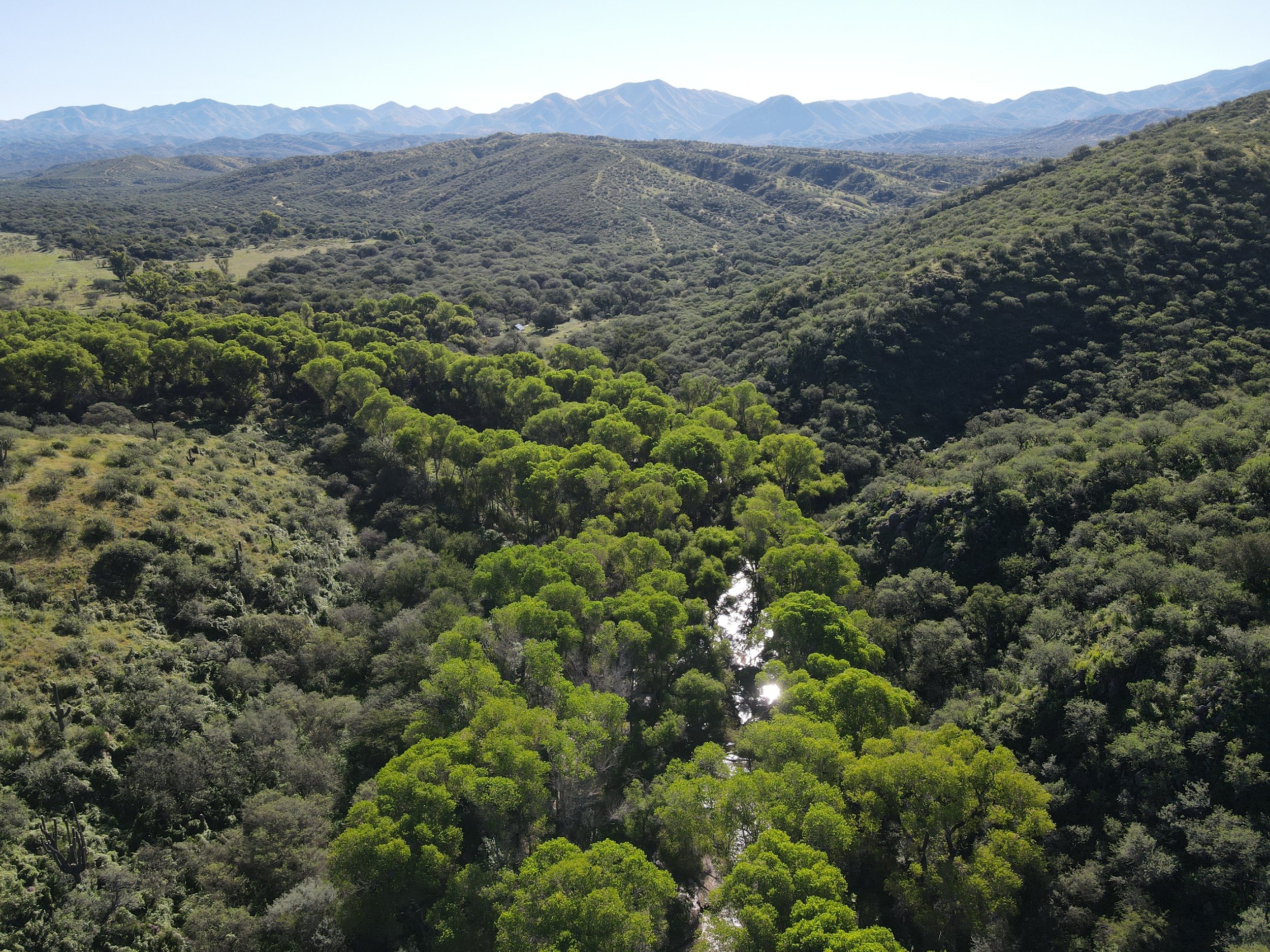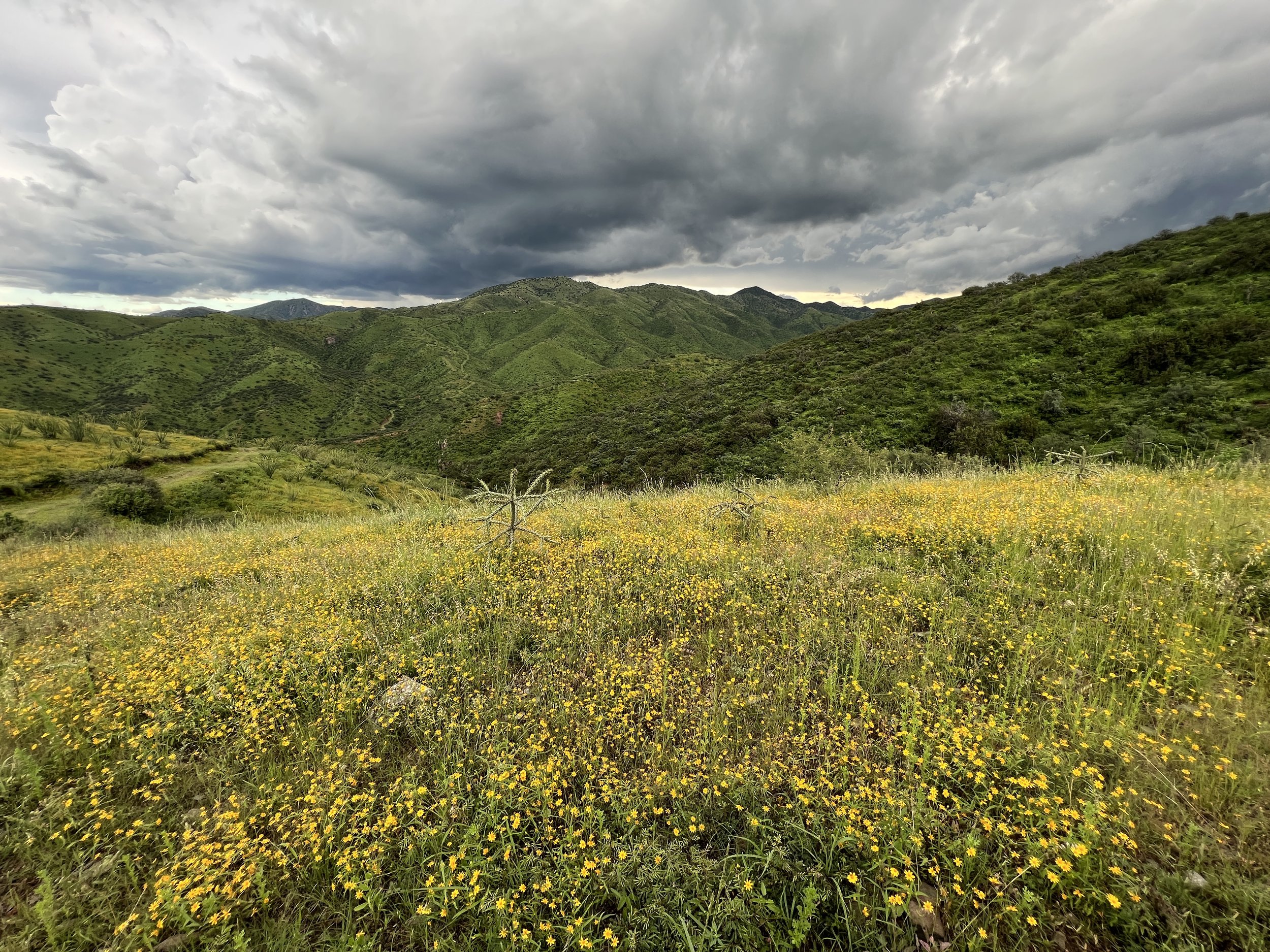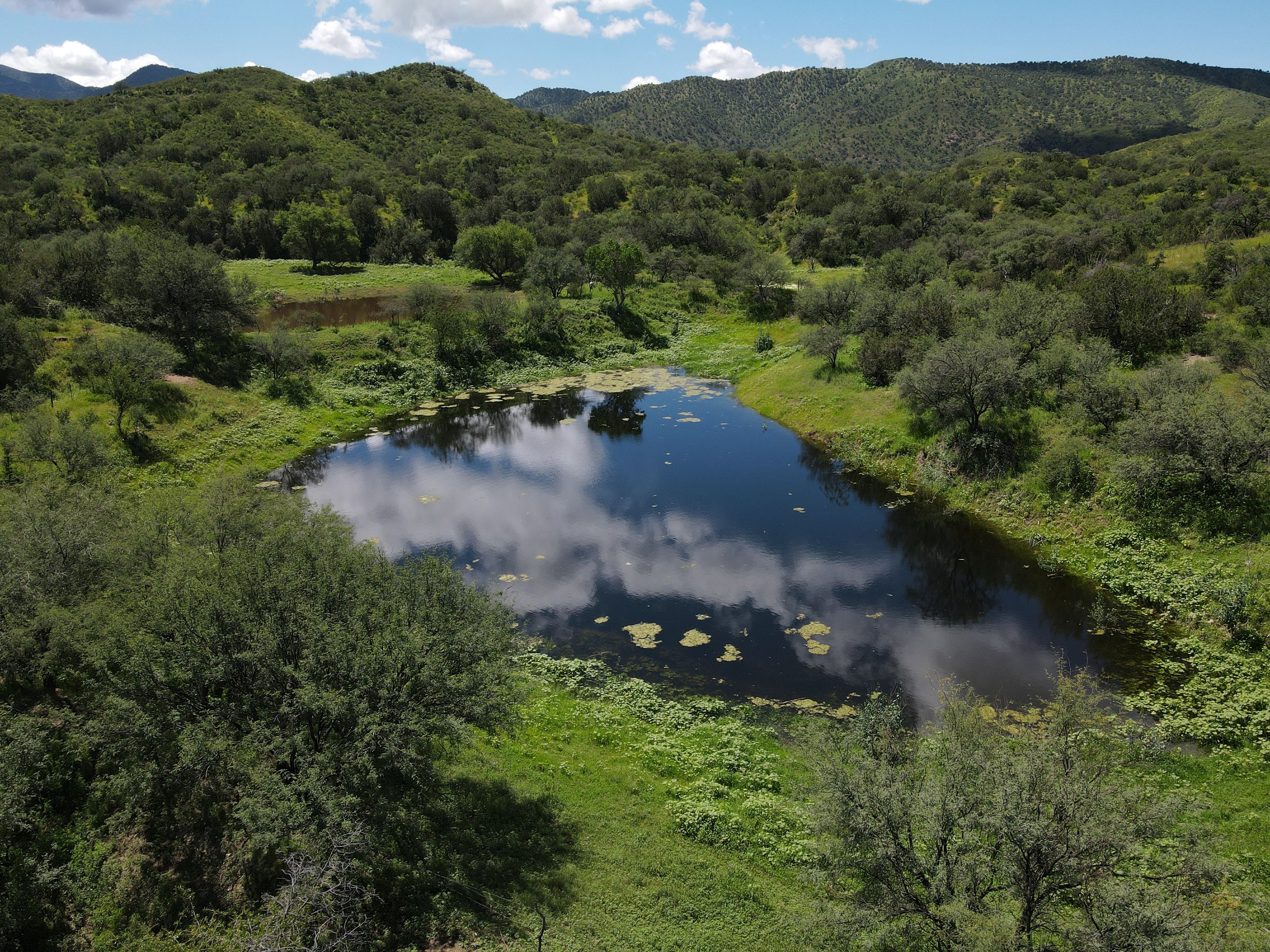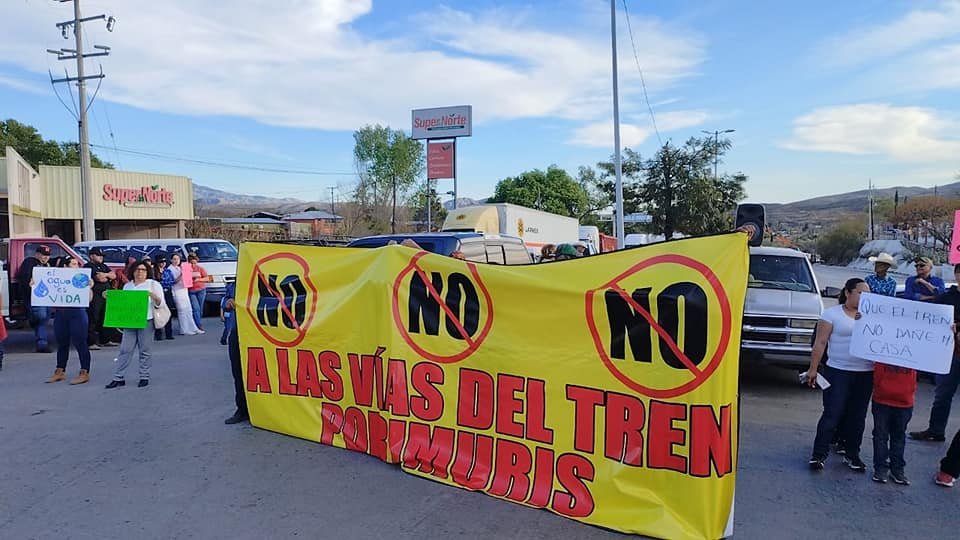All for One – The Ímuris Train Proposal
“One of our lungs was taken by the original railway. We don’t want our other lung to be taken by a new one.”




Expansive greenery teems with life along the Cocóspera River, nestled in the Sky Islands region of Sonora, Mexico.
Amid towns, agriculture, highways, interstates, railways, pipelines, and a border wall, the Sky Islands connect a politically divided landscape between Sonora in northern Mexico and southern Arizona in the United States. Here, seas of grassland and desert engulf islands of mountain peaks offering four unique climates to over 7,000 species of plants and animals.
Together, they form one of the most biodiverse regions in North America. Alive with an eclectic mix of plants and animals, black bears meet jaguars, bald eagles meet macaws, badgers meet ocelots. Birds and insects flock among them.
Many species rely on north-south movement between the landscapes and countries. After years of persecution in the U.S., jaguars, once roaming as far north as the Grand Canyon, are slowly returning to Arizona from Mexico, including celebrity jaguar El Jefe, recently photographed thanks to a Wildlands Network-led project, who likely passed through the Sierra Azul-El Pinito corridor that connects habitat in Sonora and Arizona.
Black bears use the corridor to search for food and genetic diversity between ranges during the summer. Jaguars and their smaller cousin, the ocelot – cute but feisty creatures of the night – find solace in dense tree cover with nearby water sources, which are plentiful in this corridor along the Cocóspera River.
Despite its importance for wildlife, the Sierra Azul-El Pinito corridor is threatened by the expansion of Highway 2, land conversion to agriculture, a major natural gas pipeline, and mines. As a result of habitat loss and fragmentation, black bear, jaguar, and ocelot populations have severely declined in both Mexico and the U.S. They are all federally listed as endangered in Mexico.
Among these existing fragmentations and population declines, the Sonoran government recently proposed a new development: a new rail line to increase the capacity of the already existing one that goes from Guaymas to the U.S.-Mexico border in Nogales. This new project would cut through the outskirts of the town of Ímuris and bisect the Sierra Azul-El Pinito corridor at its most vulnerable point: the valley of the Cocóspera River.
While proponents of the project chose this location to avoid high-traffic areas, the proposed route would cause extensive ecological damage to critical riparian habitat and hurt these three species, as well as other regionally endangered species like the Tarahumara salamander, the lowland leopard frog, and the Montezuma quail.
Jaguar connectivity model through the Sierra Azul-El Pinito corridor, which would be bisected by the proposed railway line (in red).
The proposed route would further fragment the Sierra Azul-El Pinito corridor, hindering the essential north-south black bear, jaguar and ocelot movement. It would cut through some of the best-preserved sections of the Cocóspera River, potentially affecting water quality, compacting soil, and destroying neighboring wetlands. It would run directly through 11 recorded ocelot sites vital to their northern-most breeding population.
Noise pollution would carry for miles and deter mammals, invertebrates, and migratory birds.
The train’s cargo would also carry waste from mines, posing the risk of potential disasters in the event of a spill.
This biodiversity hotspot must be protected from all potential threats.
“We’re afraid of chemical spills that might affect our wells and the Comaquito dam, which provides our drinking water and sustains local agriculture and cattle ranching, our town’s and people’s main livelihoods.”
In addition to natural habitat, the proposed line cuts through more than 170 families’ homes and multiple acres of private property dedicated to conservation and biodiversity research in Rancho El Aribabi. For over 20 years, the owners of El Aribabi, a government-certified Voluntary Conservation Area, have been actively supporting the study of hundreds of plants and animals, including species endangered in Mexico. Because of all that it threatens, the train project was met with immediate local resistance.
Led by private landowners and ejidatarios (communal landowners), the Ímuris community gathered to demand answers and share their voices over the last few months.
“This project will affect our cultural history at the Cocóspera Mission, our natural springs, plants, and wildlife. We have protected species like the jaguar, ocelot, and bears, among others, that must remain protected,” says Jorge Vásquez, an Ímuris local.
To support the community, Wildlands Network partnered with the Center for Biological Diversity and Sky Island Alliance, with Mirna Manteca, Northwest Mexico Program Co-Director at Wildlands Network, taking the lead. “As part of the environment, people are fundamentally integrated into conservation work. Our goal is to protect habitat connectivity and people by being a source of information and support,” says Mirna.
In February, we joined the community in a meeting with the Ímuris mayor, project representatives, and federal government officials to start a formal dialogue. The community shared their opposition to the proposed route, and we stated our concern for the Cocóspera riparian ecosystem with expertise in local conservation and science. When the issue wasn’t resolved, the community took to the streets and gathered in a formal protest on Highway 15.
A local demonstration against the proposed Ímuris Train project on March 14, 2023. Photo: Soy Cobre
The project is in its initial stages and could progress in many different directions. If the project were to be rerouted, we would support decision-makers in finding an alternate route that would be less impactful to the ecosystem, wildlife, and people.
In any case, we will continue to work alongside community members from Ímuris.
We consistently work toward restoring North America through community-based conservation. Whether we are proposing a new project or working toward conscious development, we work with the entire community in the process. Human, animal, and plant alike, we are all one community to be listened to, respected, and protected.



